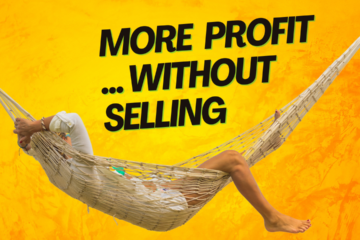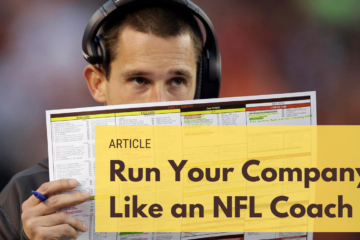Anton’s company wants to get funding, but can’t answer when investors ask his cost to acquire a customer. In this Five Minute Accelerator session, Raj breaks down how he can answer the question, and what to do first.
Transcript:
Raj: Hey Anton! How are you?
Anton: Hey Raj, I’m doing well.
Raj: Good. This is your 5 minutes to ask any questions you have. It’s not a pitch. It’s really designed to have you get any questions that you have and prepare you for a pitch. Anything that you want to talk about?
Anton: Yeah. Essentially the stage we are at is that I’m basically a developer myself. I’m not a business founder. And we do have a lack of sales or business, founder’ sex appeal. Do you know what I mean? When you actually talk the talk that investors do like. And when I start explaining stuff, investors get bored, and they’re like, “Oh, this guy is a nerd guy. We don’t like him to be the boss.” What I’m trying to figure out really is that we basically don’t like to waste time, which has got to the place of figuring out the problem. We are pretty much fanatical about it. We are deep there. We would talk the language of our customers. They are not necessarily sometimes on the level they should understand us. We were really working with marketing people.
So it’s all work in progress. The issue here is that when I’m bringing to the table, this is what we’re selling; this is how we’re doing. This is the money we are taking from the clients. That’s what they are paying us for, blah, blah, blah, all this stuff. The next question is, “What’s your cost per acquisition?” And I’m like, “Yo, Great question!” That’s why we are talking. Give me the money. I will hire like PPC, all of these marketing, money-burning machines. They will throw it to Facebook, Google, and stuff because I burned 15K of my own funds and had gone like this. This goes crazy because we seed 1 million, 2 million, 5 million, in some cases. So how to explain properly that you are basically raising to figure out those numbers because we now make sales throughout the box. We do cold emailing. We do LinkedIn. We do numbers. We do feed developers on the payroll. All of this stuff, obviously it’s not impressive. It doesn’t go like this. Nobody’s excited when I’m showing, “Okay, we can sustain.” But how do I answer this kind of thing or how I’m going to explain to them that it’s actually the cause I’m coming for the money.
Raj: Okay. I Got it. Let’s take a step back and help me understand what’s the price point of your product and who is the ideal customer?
Anton: The customer is the merchant who uses platforms like Shopify or big commerce. They do have a marketing span. They are actually concerned about their front-end performance. They are concerned about not only how fast their front-end is but how fast they build things. They are also concerned about how much it costs them to build custom things for their own store: the development, cost of labor, cost of bringing time to market, and stuff. And the price point is we do charge them a free license. If they have their own developers, “You take it, go, and good luck.” There is a 399/month, which has the ability to influence our roadmap and ability to buy our hours. Our core engineering team hours to help them tackle their own challenges and stuff. And there is a 1K/month. It’s like Shopify plus, but twice cheaper and five times more sexier. At the end of the day, it’s for someone who wants to have a managed approach. They just pick up the phone, “Yo guys, we need this thing, like I don’t care.” And this has three pricing plans free, 399, and 1K.
Raj: Okay. What’s the breakdown in terms of service delivery of product versus services? Because it sounds like there is a managed services component to it. And how does that scale? I guess this is my first question.
Anton: So it scales badly. And that’s the problem, obviously. We’re solving it by hiring partners. We are solving it by recruiting freelancers that would feel out of the marketplace. We do understand that investors don’t like this labor part of the thing. They want pure MRR recurring stuff that comes without the attached meat of the humans. Humans are not sexy; we know about it. My goal is to bring to the table themes marketplace because one of the byproducts of what we did is basically a cross-platform front-end, which means that if you build a theme that works for us as a middleware, it works for any platform. That would also bring the outdoors together. I actually don’t think which platform I should choose for my next theme. They just choose the storefront. And it would work on Shopify, on big commerce, and we’ll launch Magento then. Basically, it would work on any of those platforms. They build once, and they have three different platforms. This is something that would also bring in additional revenue and additional stream simply by having a marketplace of different templates.
Raj: Gotcha. Now that I understand a little bit what you’re doing. Let’s get to the meat of your question. Your immediate question is they’re asking what’s your CAC, and you don’t have one because you’re looking for the funding to prove out the CAC. Right? Chicken and egg problem. However, you told me you’re doing outbound. Let’s reduce this to a number somehow. If you can show that for every 1000 outbound emails, you are getting this many opportunities to take it through the sales pipeline,
Anton: Yeah, I can show it.
Raj: And then, now you build-out. This is what it would cost if we did this based on SDRs. Now for just hiring prospectors, this is what my capital needs would be. I know that this works because I’ve backed out the numbers, and you say, “Look, we can scale this way.” And while we’re scared of it this way, we also want to start to reduce the cost of the dependence on the SDRs by using some marketing dollars to get inbound leads to feed them because that’s going to be cheaper. We’re going to start this way, and you’re going to build your economic case based on evidence that you have that’s provable. Then you’re going to say, “I’m also going to allocate this much budget to testing.” The PPC or whatever methodology you use, whether it’s going to work on Google or you’re going to need LinkedIn ads, Facebook ads, whatever it’s going to be. I’m going to be testing this as a lead generator for that. Then our prediction is that the model will cut the cost by whatever. Then you can show your costs going like this, and then the performance going like this. That’s what they want to see. And it might also deal with the kind of investor you’re talking about.
Anton: Oh, yeah. For sure.
Raj: If you’re getting the question, which I would ask before, “What’s your CAC?” That’s because you’re looking at an investor who’s typically waiting for something that’s more proven in the marketplace versus an angel who would be willing to take more of a flyer. But if you can build that case based on your outbound, then I think that’s how you guide that conversation.
Anton:…Got it. Okay.
Raj: If you haven’t testing. You said you blew 15K on testing right away. You should be able to test a little bit, 5 grand a month budget unless you’re in those hyper-competitive markets. You should get, after a quarter or so with 5 grand a month; you should at least get some early signals directionally about what’s it costing per click per lead. How many MQLs do you get? You shouldn’t need to burn 15K and have no data to show for it.
Anton: Oh yeah. I do have the data. The thing is that to actually make it properly, the reality is that we need to go and use very focused media outlets, like the CSS tricks or web designer depot, where the cost of sponsoring just to put this thing is 5k starting. It’s not even disposable like Google AdWords. That’s the issue. Because we figured out that the targeting on e-commerce or targeting on merchants is broad enough that you are just gathering from the market, all of those teenagers that are overdosing on TikTok on things like “I would be drop shipping of selfies.”
Raj: You’re going to drop shipping to Shopify stores. Yeah. That’s garbage.
Anton: Exactly. And that’s what we proved. We sacked the garbage.
Raj:…So now that’s good. You have some evidence. I think your keys made building it off of the SDR model. And that’s version one of this because even for yourself, you prove what it’s going to take to stack it based on SDRs. So if you can show that math works at a smaller scale, I think that’s the key.
Anton: Got it. Because what got me confused is all of those voices, everything that is below X amount per month. The pricing is below X thousand a month should be autopilot sales; SDRs are involved. If you do it manually, you are in the wrong business. You’re doing it wrong. You’re wasting your life doing it.
Raj: Yes. That’s going to be the hindsight this 2020. Because, of course, no one’s going to be manually selling a $399 product there. It’s just not going to work, but they didn’t start there. Because it’s not like you launch the product, and everyone all of a sudden comes running. What happens is they slogged it as you did, and you’re doing a bunch of manual sales, and it’s painful, and you’re doing it again and again. Until you figure out something that clicks, whether it’s a subsegment of the market or a campaign that works whenever you do outreach to this kind of store, and it happens to be a retail store in apparel, run by a woman between 35 and 45 years old. You’re like, “Okay, this is gold.” Now you know where to go. And that’s how it goes that way. I think it might need the kinds of investors you’re talking to.
And some of them might get disinterested when they hear services. It might be that you’re going to slug it out for a little longer, but that’s going to be without investment, but that might be the best thing that can happen to you. Because if you build it a little bit slower and get to that point, you’re going to retain more of the company. And frankly, you’ll probably learn a lot more and be able to take off faster when that does come. I wouldn’t try to rush into it unless you’re running on fumes.
Anton: Got it. Okay. That’s pretty good. It’s making me calmer because of all of this successful success, that is, to get pro and to you for the tech crunch and stuff. You see, the guys build nothing, have 9 million seeds, then six months later, have 43 million hay. You’re just like, “Wow, how do we compete with those..”
Raj:…Well, that’s not reality because tech crunch reports what’s sexy, and what’s sexy is when somebody gets a big slug of cash. They’re reporting on a big number. What you don’t see is how many of those fail, which is the vast majority of them and those that succeed, how little the founders end up with versus if what you do is something that is sustainable and you keep it closer to the best for longer. I’m like the opposite of all the other investors. I’m just saying, don’t give me equity. Hold onto it for longer. Don’t have someone take a big slug at your company, especially this early on. Take it easy. Don’t worry about what everyone else is saying. Do what’s right for your business. Do what’s right for you. Just ignore all the noise.
Anton: Because what made me sort of nervous is the fact that there’s so much money in these investments. It is inflating the price of ads because everybody can afford that. So why those publishers should make it cheap, and you go and see the banner costs, you just 5K. And you’re, “Wow, come on, guys..”
Raj: Yeah, and you don’t need to go. Then again, I think using the outreach and cold outreach with SDRs is going to get past all of this stuff. Then you’ll figure it out and then be on social media, promoting just on LinkedIn, especially what you’re doing. And that will get noticed.
Anton: Yeah. I was able to attract some deployed e-commerce people to the clubhouse, and I would become a clubhouse star person, I guess.
Raj: Fantastic…For what that’s worth.
Anton: At least for that, it will be useful, overall. We’ll see…
Raj: Exactly!
Anton: Thank you very much. It actually brings back some good months…
Raj: Good. That’s excellent. Anton. I check it on another one of these calls down the line. I want to hear how you’re doing. I want to hear what’s working, what’s not working. If I can be helpful to you, just hop on, and we’ll do another one. All right.
Anton: Thank you very much. Have a good rest of your day.
Raj: Thank you. Bye-Bye.
Anton: Thank you. Bye-bye.



